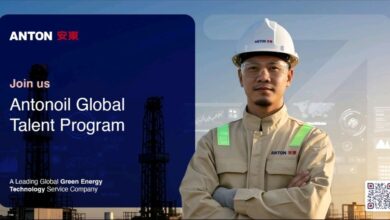Horatio Alger Scholarship 2025 : Amount, Requirements & Acceptance Rates

Horatio Alger Scholarship Amount, Requirements & Acceptance Rate 2025: Want to study abroad? Opportunity Den brings you exciting opportunities to study abroad. Here is all you need to know before applying for the Horatio Alger Scholarship to study abroad.
What is the Horatio Alger State Scholarship?

This Scholarship is an initiative of the Horatio Alger Association, and the association deems it necessary to present scholarship awards to high school juniors, especially those unable to attend college due to hardship in life. To be considered under this program, you must be critically evaluated to know the status of your financial need and how you can persevere in times of adversity. Candidates already actively engaged in a series of community development services and extracurricular activities are invited to apply for this amazing program.
Horatio Alger Scholarship Amount
This scholarship awards up to $25,000 to 106 students. The awards are presented to successful applicants to undergo four years of undergraduate studies to study in any college in the USA. Here is a brief breakdown of some of the available offers:
1: The Belle Plaine Community Schools Scholarship
The scholarship amount is $10,000 each to 4 selected candidates. This amount is funded by Henry B. Tippie.
2: The Bergeron Everglades Environmental Steward Scholarship
The Bergeron Everglades Environmental Steward Scholarship awards 2 scholarships worth up to $20,000 each. The funding for this scholarship is provided by Association Member Ronald M. Bergeron.
Learn More About the Bergeron Everglades Environmental Steward Scholarship
3: The Buntrock South Dakota State Scholarship
Buntrock South Dakota State Scholarship awards 2 scholarships worth up to $20,000 each.
4: The Dennis Phyllis Washington Foundation Scholarship to Study at the College of Idaho
The Dennis Phyllis Washington Foundation Scholarship awards 5 scholarships that are worth up to $52,000 for each awardee. The funding for this program is provided by the Dennis and Phyllis Washington Foundation.
5: The Dennis and Phyllis Washington Foundation Undergraduate Scholarship
The Dennis and Phyllis Washington Foundation Undergraduate Scholarship awards up to 50 scholarships worth $10,000 to each successful candidate, and an extra $5,000 amount is awarded by partnering institutions. The funding for this program is provided by Dennis R. Washington.
6: The Denny Sanford Arizona State University Scholarship
The Denny Sanford Arizona State University Scholarship awards 25 scholarships worth up to $10,000 each. The funding for this program is provided by T. Denny Sanford.
Horatio Alger Scholarship Requirements
To be deemed fit for this scholarship, you must meet the following requirements to be considered under this program:
- Your GPA should not be less than 2.00.
- You must be residing in the U.S.
- You can apply if you are a high school junior.
- Candidates who are seeking a bachelor’s degree are called to apply.
- You should be a U.S. citizen.
- You should be participating in extracurricular activities and community service.
- You should show that you can persevere in overcoming stress and adversity.
- To be considered, your maximum adjusted gross income (AGI) should be less than $65,000.
- You must demonstrate the need for financial aid.
How to Apply for the Horatio Alger Scholarship?
Abide by the following instructions to successfully make your application for the scholarship program by Horatio Alger:
Visit the online application portal on the official website.
To find out more about the Horatio Alger Scholarship and to check their frequently asked questions, refer to the official website:
Horatio Alger Scholarship Acceptance Rate
The Horatio Alger Association offers more than 70 scholarship opportunities for students who are in different stages of their academics. The scholarship is highly competitive, so you need to make an outstanding application to be considered. Tips on how to make your application exceptional have been outlined in the next section. This is a need-based scholarship, and only candidates who demonstrate the need for financial assistance are considered.
Horatio Alger Scholarship: Tips to Help You Make an Outstanding Application
1: Learn more about the host organization and visit their social media account.
You may find interesting details from the Horatio Alger Association of Distinguished Americans social media account; the organization is present on Facebook, Twitter, Instagram, and YouTube. When you follow their page, you get to learn what their alumni are doing, their success stories, and how to navigate the application process.
2: Search for past winners
Doing a broad search of past winners of the Horatio Alger financial aid awards gives you an idea of the kind of person the scholarship is looking for so that you can shape yourself to their standard.
3: Be as truthful as possible
The foundation by Horatio Alger wasn’t built in an advantaged background, so you should try as much as possible to be truthful in your details. Let them know your unique story and what you plan to achieve through the program.
Application Deadline for Horatio Alger Scholarship
The last date to apply for the undergraduate scholarship is on the 15th of March. The application opened since December 1st. By making a single application, you may be lucky to be considered for a scholarship by the Horatio Alger Association. Ensure to send the complete application alongside the required application materials on or before 12:00 p.m. E.T. of 15th March.
The Takeaway
We hope you got all you need to know before applying for the Horatio Alger Awards to study abroad. Now go ahead and make your application. Share this opportunity now!



